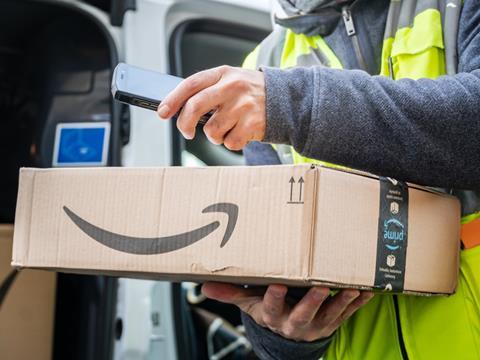
The pandemic has been a catalyst for change, way beyond our expectations. E-commerce has been propelled to new heights, with online order volumes swamping conventional fulfillment centres. Now, as a second wave sweeps Europe, Jo Bradley, business development manager for packaging solutions at Quadient, looks into the ways in which businesses can prepare for the predicted mega-peaks of a Covid Christmas.
The Centre for Retail Research expects e-commerce sales in Western Europe (UK, Germany, France, Netherlands, Italy and Spain) to reach €322 billion in 2020, against a pre-Covid forecast of €273 billion. This represents a growth of 31% in a single year, giving online a 16.2% share of total retail sales in 2020.
Indications are that e-commerce peaks this Christmas will be even more extreme than usual. Research from Klarna and Retail Economics has found that 71% of consumers are reluctant to shop in-store in the lead up to Christmas, with 56% saying they expect to do more online shopping this year.
So, how are online retailers going to cope with this sudden and protracted shift in demand for goods purchased over the net?
Many retailers with a busy online channel will need to ask themselves the question: Is a conventional, heavily manual approach to preparing orders for dispatch still fit for purpose?
Here are five key points to consider when adopting automation in the packaging area:
Build-in sustainability
Oversized packaging is wasteful. More cardboard is used, void-fill is necessary and fewer packages are carried per trailer, leading to excessive CO2 emissions and higher fuel, material, and carriage costs. Making each individual package to the exact size needed better protects the item in transit – without the need for void fill – minimises cardboard usage, saves resources, and reduces shipping costs.
By consistently making each box to the exact dimensions needed to hold the items firmly, goods are better protected, and package volumes can be reduced by up to 50%, cutting cardboard usage by 20% and eliminating the need for void fill. The savings on materials are significant in themselves.
Reduce shipping costs
Shipping air serves no purpose – it simply increases costs unnecessarily and negatively impacts the environment. Oversized packages contribute directly to more vehicles on the road, pollution, congestion, and greater shipping expenses. The larger the box, the fewer can fit into a trailer.
Until fairly recently, carriage charges for domestic deliveries were based on a parcel charge with maximum weight and dimensions per parcel, so there was an incentive to use a smaller box as fresh air moved for free. That is changing.
Many of the larger carriers and couriers have moved to a dual system whereby carriage is charged at a rate based on actual weight or ‘volumetric’ or ‘dimensional’ weight, whichever is the greater. Consequently, size really does matter.
Increase operational efficiency
Automation in the form of fit-to-size packing systems can remove the need for between 20-30 packing desks, freeing up valuable and increasingly scarce labour resources for other more value-adding duties.
In addition, the capacity to produce high volumes of perfectly-sized packages at speed can reduce the stress of having to find additional labour at peak – a process that often requires early planning and exposure to risk. Fit-to-size automation enables you to be peak ready and fully equipped for future growth.
Enhance the customer experience
Consumers are increasingly disgruntled by wasteful packaging – oversized boxes filled with expanded polystyrene, bubble wrap and other forms of void fill. This is reflected in a ‘Which?’ survey where 48% of customers agree that “excessive packaging is one of the most annoying things about online shopping.” Survey evidence also suggests that customers feel more positively about brands that are trying to reduce unnecessary packaging.
How a package is received is all part of the brand experience. Perfectly sized packaging protects items in transit better, leading to fewer breakages, and less packaging for the customer to dispose of in the recycling bin. The ‘unboxing experience’ is all about presentation – it can play a significant part in a customer’s perception of the product and a positive unboxing experience is more likely to lead to further orders.
Increase capacity – be ‘peak ready’
The traditional, manual, approach to packing in the UK has been significantly challenged by three key factors.
Firstly, following Brexit, available labour resources are no longer as easy to access in many areas of the country. Secondly, the National Living Wage, applicable to all employees over 25 years old, has risen to £8.72. And thirdly, with the outbreak of COVID-19, social distancing requirements within the warehouse present a major headache for organisations.
If peak volumes are set to rise, then packaging performance will need to be radically improved. Bringing in large teams of people at peak is simply no longer a viable option.
Greater use of automation in the packing area will help. But simple, size-constrained machines using only one-size of box do not cater for the wide variety of products and order sizes experienced by most online retailers.
If demand for smaller items to be packed exceeds the capacity of the relevant machine, the shipper has no option but to move up a box size, or two, leading to wasteful use of materials and extra shipping costs. A more flexible approach is needed.











